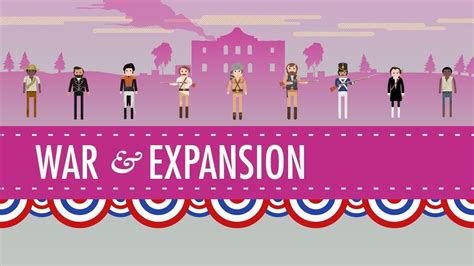
Throughout its history, the United States has endured periods of intense hardship and turmoil, suggesting that current challenges, while significant, are not unprecedented. From devastating epidemics to political corruption and social unrest, the nation’s past reveals a resilience that offers perspective on contemporary issues.
The history of the United States is punctuated with episodes that tested the nation’s resolve and character. These events, documented extensively, serve as reminders that the present, however challenging, is part of a larger historical narrative marked by both progress and setbacks.
Disease and Public Health Crises
Several times in its history, the U.S. has been ravaged by widespread diseases. The yellow fever epidemics of the late 18th and 19th centuries caused widespread panic and mortality. “In 1793, a yellow fever epidemic in Philadelphia, then the nation’s capital, killed thousands and led to mass panic,” according to historical records. The Spanish Flu pandemic of 1918-1919, another significant public health crisis, infected an estimated 500 million people worldwide, including about 28% of the U.S. population, resulting in approximately 675,000 American deaths. These events highlight the nation’s historical vulnerability to pandemics and the public health challenges they pose.
The polio epidemics of the early to mid-20th century caused widespread fear, particularly among parents. Before the development of the polio vaccine, thousands of children were paralyzed each year. “The fear of polio was palpable, leading to the closure of public spaces like swimming pools and schools,” reflecting the significant impact on daily life.
Economic Depressions and Financial Crises
The United States has experienced multiple economic downturns that caused widespread hardship. The Panic of 1837, triggered by speculative lending practices and Jackson’s “Specie Circular,” led to bank failures and a prolonged economic slump. “Land values plummeted, banks failed, and unemployment soared,” according to economic historians.
The Long Depression of 1873-1879 followed the Panic of 1873, which was triggered by railroad speculation and bank failures. This depression resulted in high unemployment, business failures, and social unrest. The period was marked by labor strikes and growing tensions between workers and employers.
The Great Depression of the 1930s was the most severe economic crisis in modern history. The stock market crash of 1929 triggered a decade-long period of high unemployment, poverty, and social upheaval. “At its height, unemployment reached 25%, and many Americans lost their homes and savings,” highlighting the scale of the crisis. President Franklin D. Roosevelt’s New Deal programs, while controversial, provided relief, recovery, and reform measures that helped to mitigate the worst effects of the Depression.
The 2008 financial crisis, triggered by the collapse of the housing market and the failure of major financial institutions, led to a severe recession. “The crisis resulted in widespread job losses, foreclosures, and a decline in economic activity,” according to economic analysts. The government’s response included bank bailouts and stimulus packages aimed at stabilizing the financial system and stimulating economic growth.
Political Corruption and Scandals
Political corruption has been a recurring theme throughout U.S. history. The Whiskey Ring scandal of the 1870s involved a network of distillers and government officials who defrauded the federal government of excise taxes on whiskey. “The scandal implicated high-ranking officials in the Grant administration,” undermining public trust in government.
The Teapot Dome scandal of the 1920s involved Secretary of the Interior Albert Fall, who accepted bribes in exchange for leasing government-owned oil reserves to private companies. “Fall was eventually convicted of accepting bribes and became the first cabinet member to be imprisoned for actions taken while in office,” marking a significant breach of public trust.
The Watergate scandal of the 1970s, involving President Richard Nixon and his administration, led to Nixon’s resignation and a crisis of confidence in government. “The scandal involved illegal activities such as wiretapping, burglary, and obstruction of justice,” according to investigative reports. The Watergate scandal led to significant reforms aimed at increasing government transparency and accountability.
Social Unrest and Civil Strife
The United States has experienced numerous periods of social unrest and civil strife. The Civil War (1861-1865) was the most devastating conflict in American history, resulting in the deaths of hundreds of thousands of soldiers and civilians. “The war was fought over the issue of slavery and states’ rights,” according to historical accounts. The Reconstruction era that followed the Civil War was marked by ongoing racial tensions and violence.
Labor unrest has been a recurring theme in American history. The Haymarket Affair of 1886, a labor demonstration in Chicago that turned violent, resulted in several deaths and injuries. “The event led to increased tensions between labor and management and fueled anti-immigrant sentiment,” according to historical records. The Pullman Strike of 1894, a nationwide railroad strike, was suppressed by federal troops and resulted in numerous deaths and injuries.
The Civil Rights Movement of the 1950s and 1960s was a period of intense social and political activism aimed at ending racial segregation and discrimination. “The movement faced violent resistance in many parts of the country, but ultimately led to significant legal and social reforms,” according to historians.
The anti-Vietnam War protests of the 1960s and 1970s were marked by widespread demonstrations, civil disobedience, and violence. “The protests reflected deep divisions within American society over the war and government policies,” according to contemporary reports.
Environmental Disasters
The United States has faced numerous environmental disasters throughout its history. The Dust Bowl of the 1930s was a period of severe drought and dust storms that devastated agricultural regions in the Great Plains. “The Dust Bowl led to widespread economic hardship and displacement,” according to environmental historians.
The Cuyahoga River fire of 1969, in which the heavily polluted river in Cleveland, Ohio, caught fire, helped to galvanize the environmental movement and led to the passage of landmark environmental legislation. “The fire served as a stark reminder of the environmental consequences of industrial pollution,” according to environmental activists.
The Exxon Valdez oil spill of 1989, in which an oil tanker ran aground in Prince William Sound, Alaska, resulted in widespread environmental damage. “The spill killed hundreds of thousands of birds and marine animals and devastated local communities,” according to environmental reports.
Hurricane Katrina in 2005 was one of the costliest and deadliest natural disasters in U.S. history. “The hurricane caused widespread flooding and destruction in New Orleans and the Gulf Coast,” according to disaster relief agencies.
Terrorism and Security Threats
The United States has been the target of terrorist attacks throughout its history. The attack on Pearl Harbor in 1941, in which Japanese forces attacked the U.S. naval base in Hawaii, led to the United States’ entry into World War II. “The attack killed thousands of Americans and shocked the nation,” according to historical accounts.
The Oklahoma City bombing of 1995, in which a domestic terrorist bombed the Alfred P. Murrah Federal Building, resulted in numerous deaths and injuries. “The bombing highlighted the threat of domestic terrorism,” according to law enforcement officials.
The September 11, 2001 terrorist attacks, in which terrorists hijacked and crashed airplanes into the World Trade Center in New York City and the Pentagon in Washington, D.C., resulted in thousands of deaths and led to the “War on Terror.” “The attacks transformed American foreign policy and security measures,” according to national security analysts.
Frequently Asked Questions (FAQ)
1. What was the impact of the Spanish Flu pandemic on the United States?
The Spanish Flu pandemic of 1918-1919 infected an estimated 28% of the U.S. population and resulted in approximately 675,000 American deaths. It caused widespread panic, overwhelmed healthcare systems, and significantly impacted daily life, leading to the closure of public spaces and businesses.
2. How did the New Deal programs address the Great Depression?
President Franklin D. Roosevelt’s New Deal programs aimed to provide relief, recovery, and reform measures to mitigate the worst effects of the Great Depression. These programs included job creation projects, financial reforms, and social safety nets such as Social Security. While controversial, the New Deal helped to stabilize the economy and alleviate suffering for millions of Americans.
3. What were the key events and outcomes of the Civil Rights Movement?
The Civil Rights Movement of the 1950s and 1960s was a period of intense activism aimed at ending racial segregation and discrimination. Key events included the Montgomery bus boycott, the March on Washington, and the passage of the Civil Rights Act of 1964 and the Voting Rights Act of 1965. The movement faced violent resistance but ultimately led to significant legal and social reforms that advanced racial equality.
4. What were the main causes and consequences of the Watergate scandal?
The Watergate scandal of the 1970s involved illegal activities by President Richard Nixon and his administration, including wiretapping, burglary, and obstruction of justice. The scandal was triggered by a break-in at the Democratic National Committee headquarters at the Watergate Hotel. The consequences included Nixon’s resignation, the conviction of several high-ranking officials, and significant reforms aimed at increasing government transparency and accountability.
5. How did the 9/11 terrorist attacks transform American foreign policy and security measures?
The September 11, 2001 terrorist attacks, in which terrorists hijacked and crashed airplanes into the World Trade Center and the Pentagon, resulted in thousands of deaths and led to the “War on Terror.” The attacks transformed American foreign policy by prioritizing counterterrorism efforts and leading to military interventions in Afghanistan and Iraq. Security measures were significantly enhanced, including increased airport security, the creation of the Department of Homeland Security, and expanded surveillance programs.
Additional Historical Events and Challenges
Beyond the examples highlighted in the original article, numerous other events in U.S. history underscore the nation’s capacity to overcome adversity. These include:
-
The War of 1812: This conflict with Great Britain tested the young nation’s sovereignty and ability to defend itself. While the war resulted in no clear victor, it solidified American independence and fostered a sense of national unity. The burning of Washington D.C. by British forces was a particularly low point, highlighting the vulnerability of the fledgling government.
-
The Trail of Tears (1830s): The forced removal of Native American tribes, particularly the Cherokee, from their ancestral lands in the southeastern United States remains a dark chapter in American history. Thousands died during the forced march to Oklahoma, highlighting the government’s mistreatment of indigenous populations and the devastating consequences of westward expansion.
-
The Compromise of 1850 and the Kansas-Nebraska Act (1854): These legislative efforts to address the issue of slavery in newly acquired territories ultimately failed and exacerbated tensions between the North and South. The Kansas-Nebraska Act, which allowed residents of those territories to decide on the issue of slavery through popular sovereignty, led to violence and bloodshed in “Bleeding Kansas,” foreshadowing the Civil War.
-
The Red Scares (1919-1920 and 1947-1957): These periods of intense anti-communist paranoia led to widespread civil liberties violations and the persecution of suspected radicals. The Palmer Raids of the first Red Scare and the McCarthy era of the second Red Scare demonstrated the dangers of political extremism and the erosion of constitutional rights in times of perceived national crisis.
-
The Watts Riots (1965) and other urban uprisings: The Watts Riots in Los Angeles, along with similar uprisings in other cities during the 1960s, reflected deep-seated racial inequalities and social unrest. These events highlighted the ongoing struggles for civil rights and economic opportunity in urban communities.
-
The Energy Crisis of the 1970s: The oil embargoes and rising energy prices of the 1970s led to economic hardship and a sense of national vulnerability. The crisis forced Americans to confront their dependence on foreign oil and prompted efforts to develop alternative energy sources.
-
The AIDS Epidemic (1980s-present): The AIDS epidemic caused widespread fear and devastation, particularly within the LGBTQ+ community. The initial government response was slow and inadequate, leading to criticism and calls for greater action. The epidemic highlighted the importance of public health initiatives and the need to combat stigma and discrimination.
-
The Dot-Com Bubble Burst (2000): The collapse of the dot-com bubble in the early 2000s led to significant job losses and a decline in investor confidence. The crisis underscored the risks of speculative investment and the importance of sound financial practices.
These historical events demonstrate that the United States has repeatedly faced significant challenges and overcome adversity. From economic depressions and political scandals to social unrest and environmental disasters, the nation has shown a remarkable capacity for resilience and renewal. While current challenges are undoubtedly significant, understanding the historical context can provide perspective and hope for the future. The ability to learn from past mistakes and draw upon the strengths that have sustained the nation through previous crises is essential for navigating the challenges of the present.
Conclusion
The United States’ history is replete with instances of severe challenges, from epidemics and economic crises to political corruption and social upheaval. These events, while often devastating, have also demonstrated the nation’s resilience and capacity for overcoming adversity. By examining these historical precedents, it becomes clear that while current challenges are significant, they are not unprecedented. A deep understanding of this history can offer valuable perspective and inform efforts to navigate the present and build a more resilient future. The ability to learn from past mistakes and draw upon the strengths that have sustained the nation through previous crises is essential for addressing contemporary issues and ensuring continued progress.
The article provides a compelling argument that the United States has faced worse challenges in its history, offering historical context to contemporary issues. While the article provides a wide range of examples, it is important to remember that each historical event is unique and has its own specific context and consequences. Drawing parallels between past and present events can be helpful for understanding current challenges, but it is also important to avoid oversimplification and to recognize the distinct characteristics of each situation. The nation’s ability to learn from past mistakes and adapt to changing circumstances will be crucial for navigating the challenges of the 21st century.









